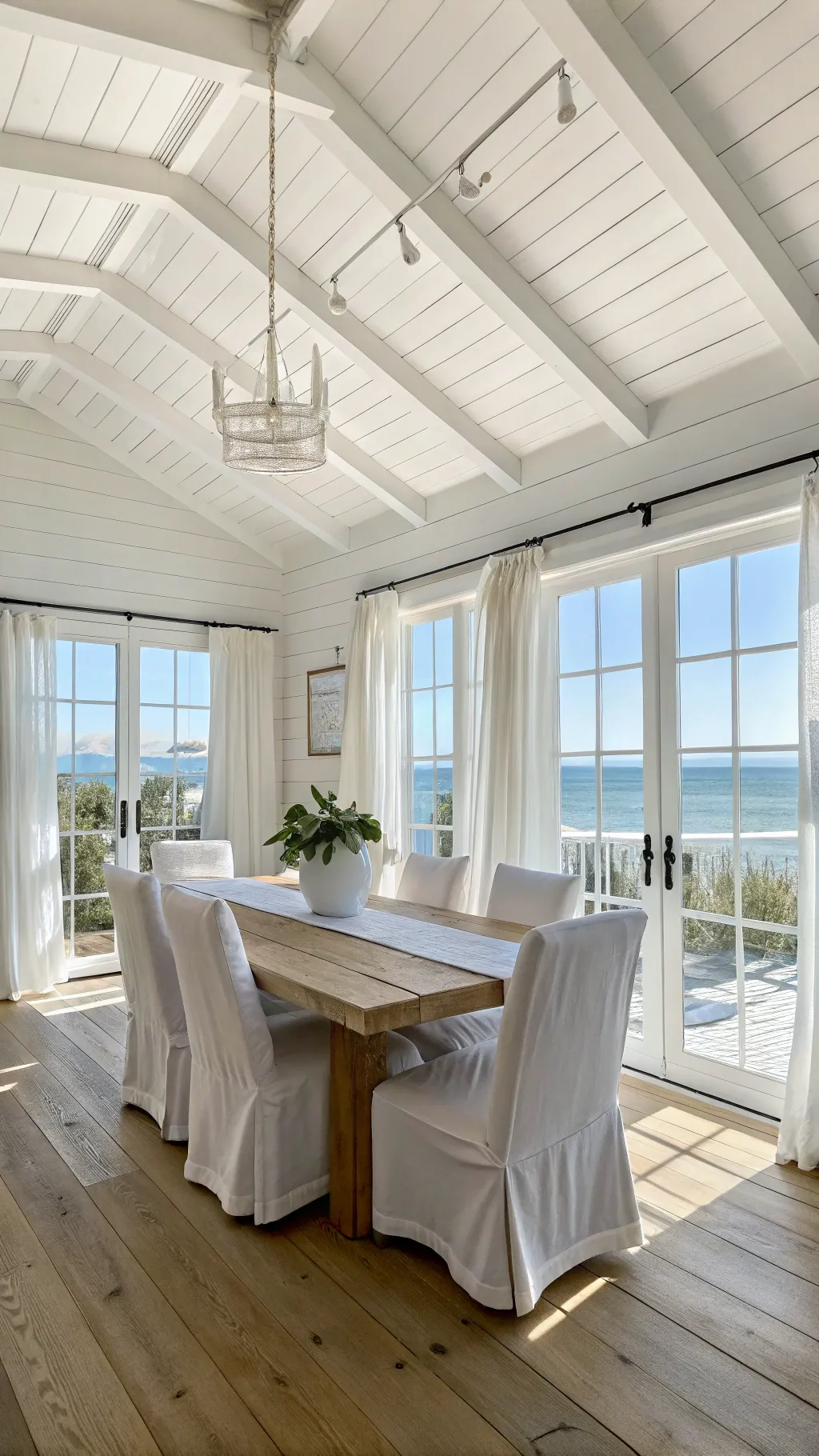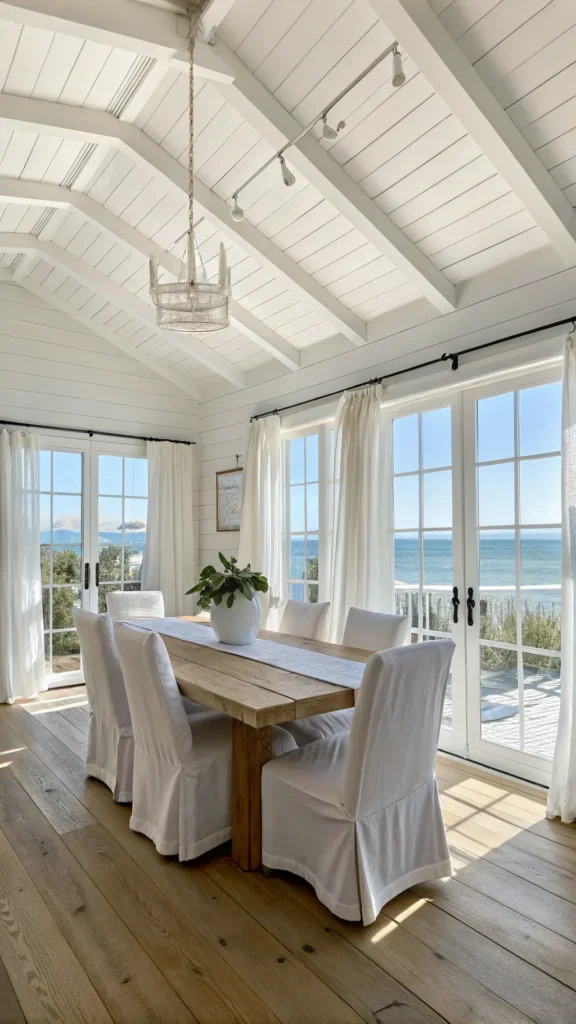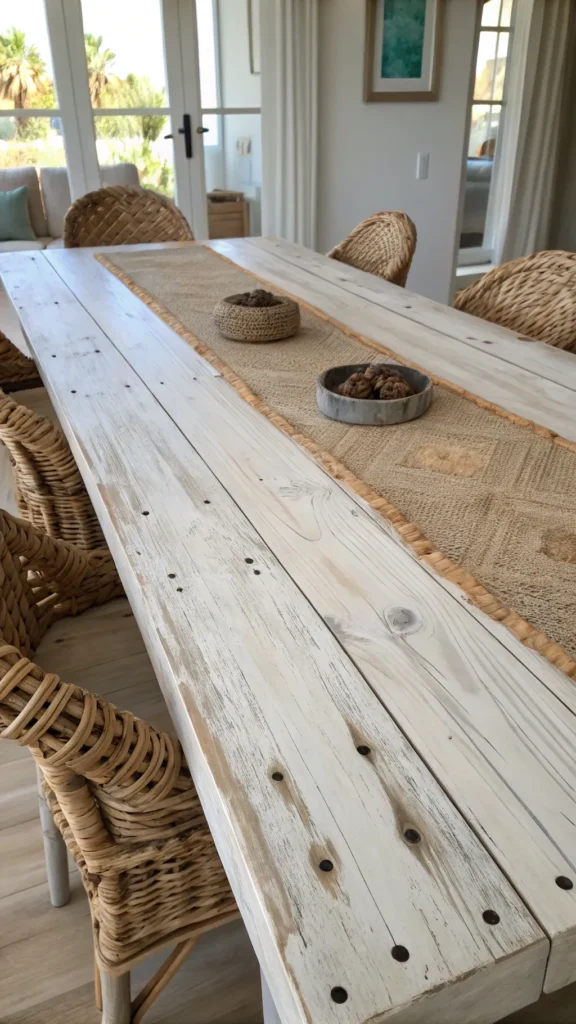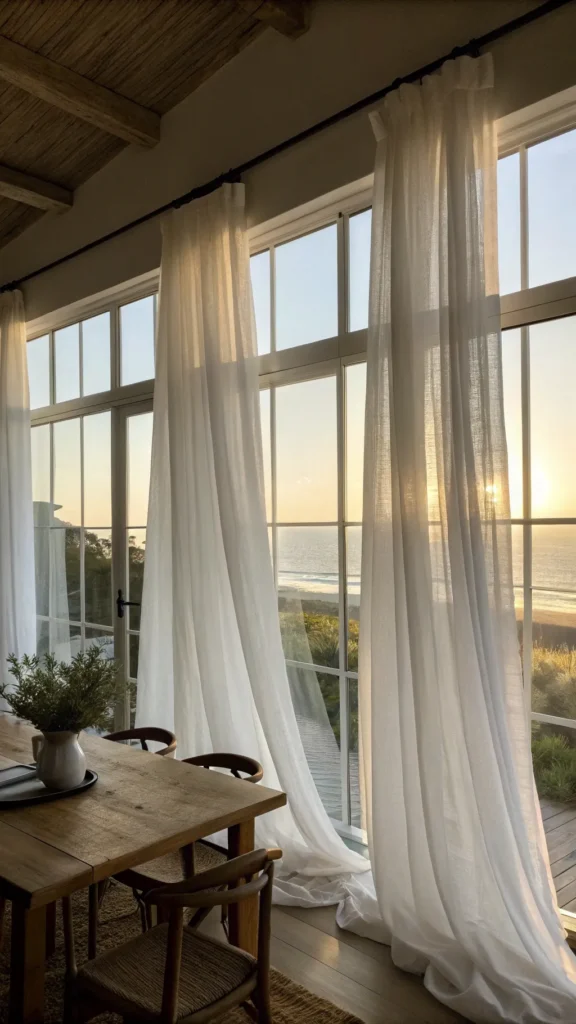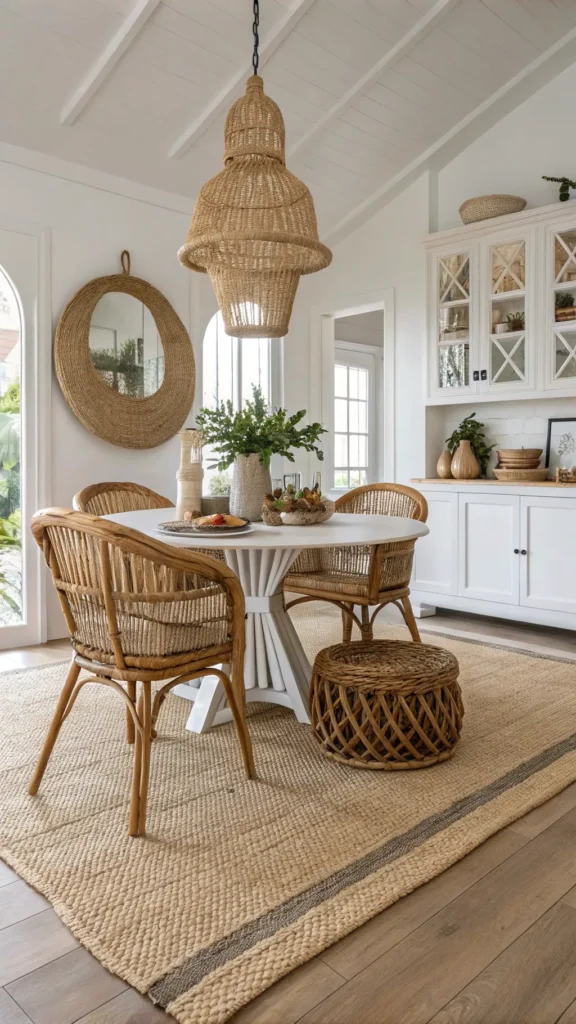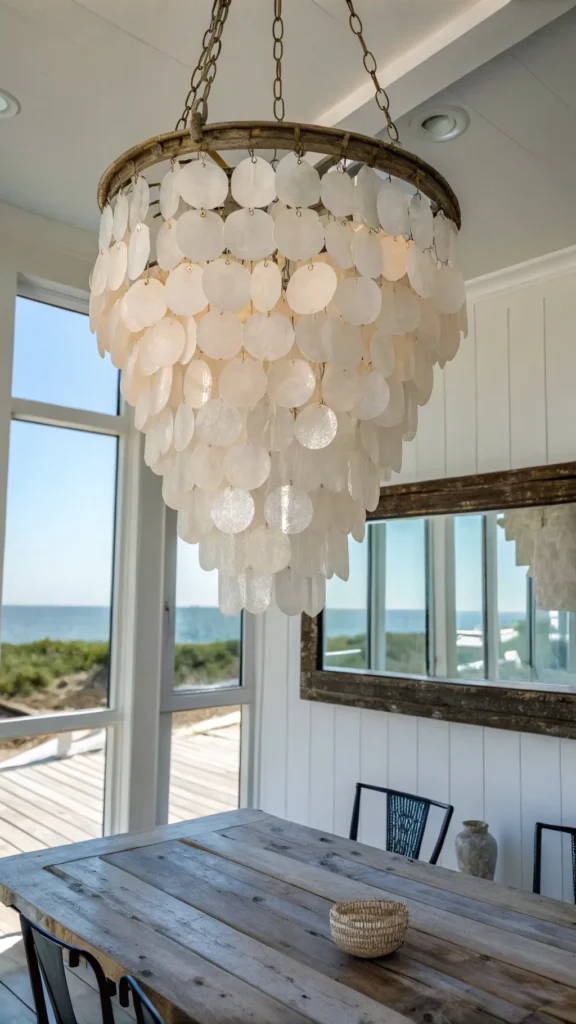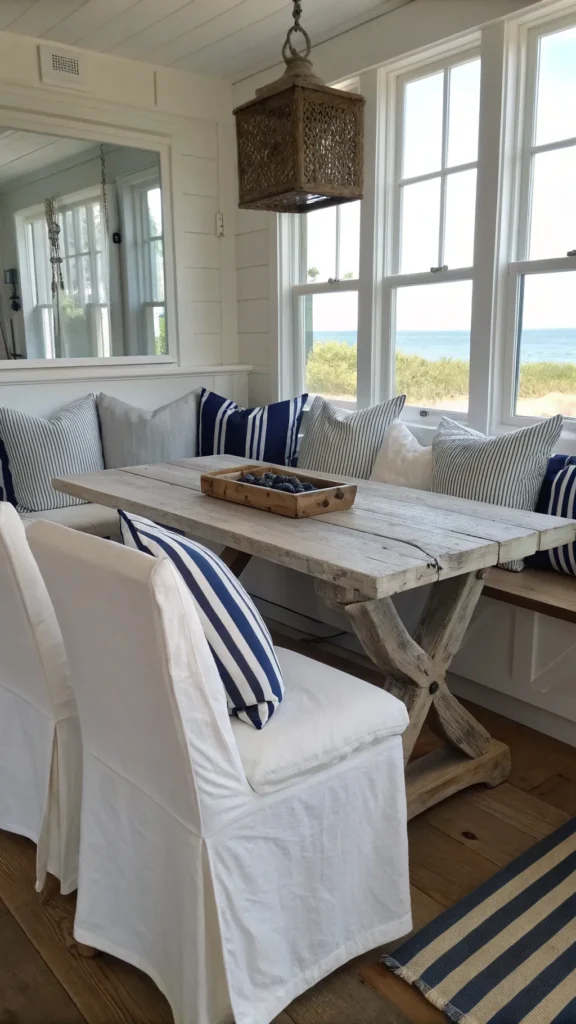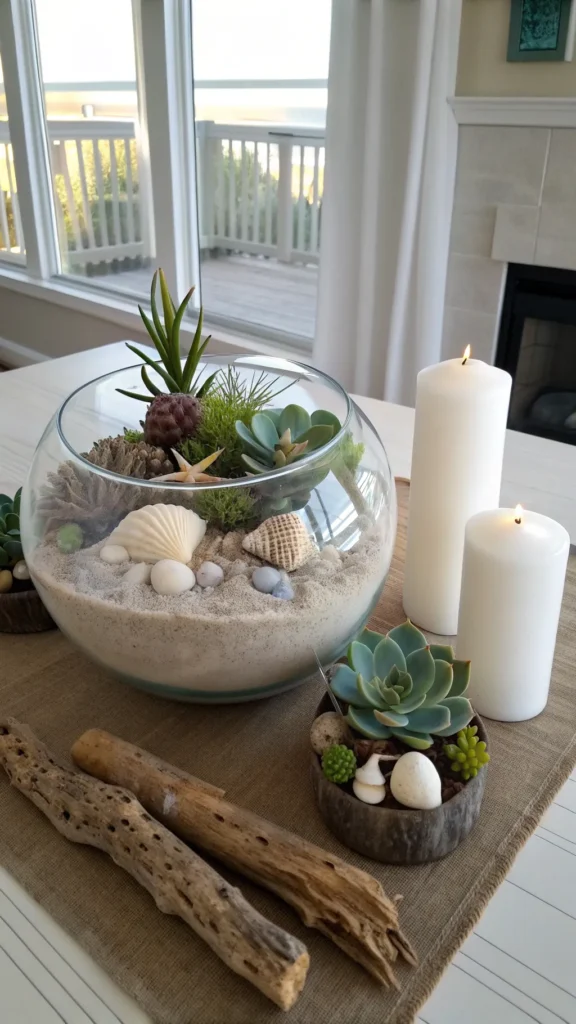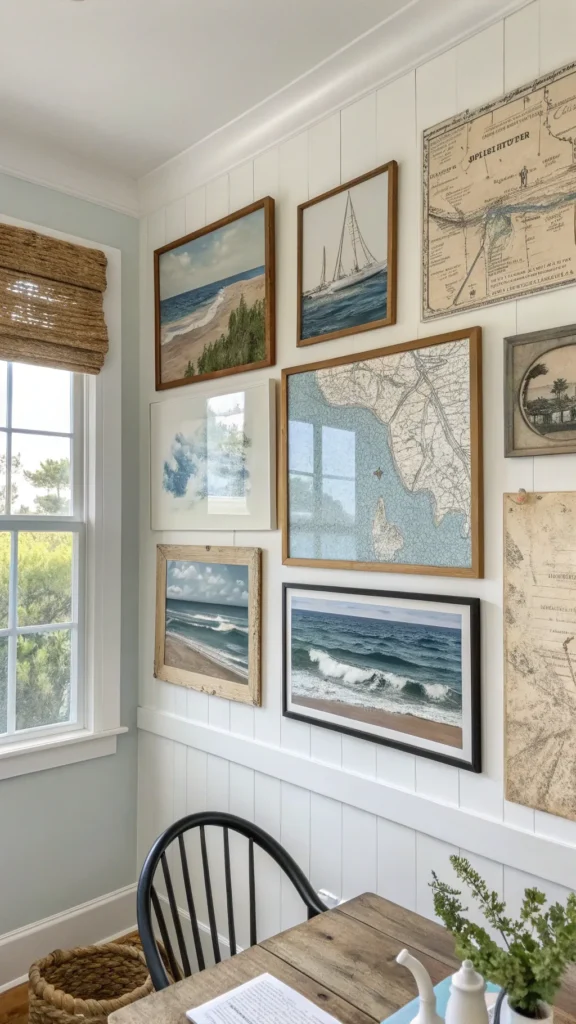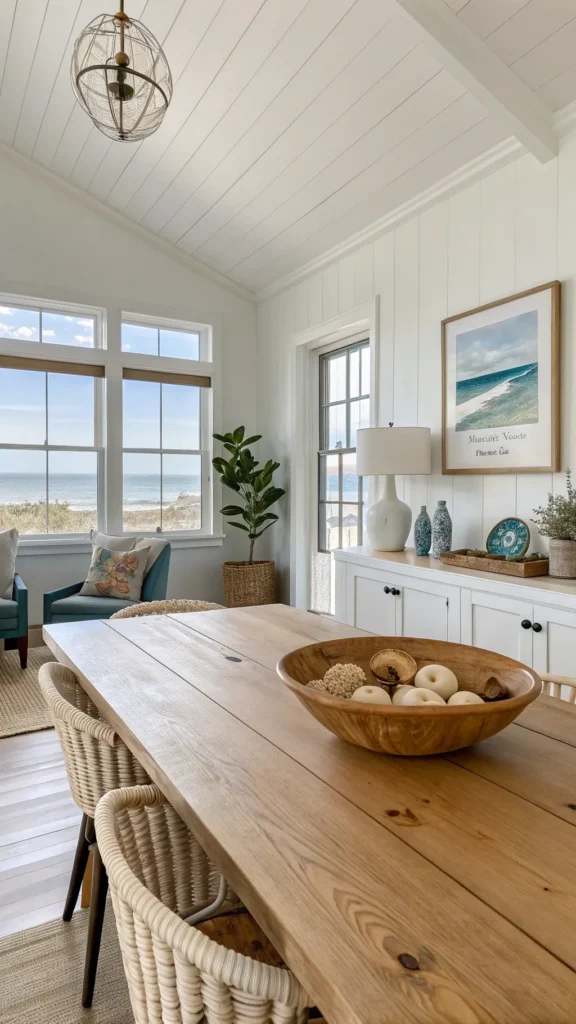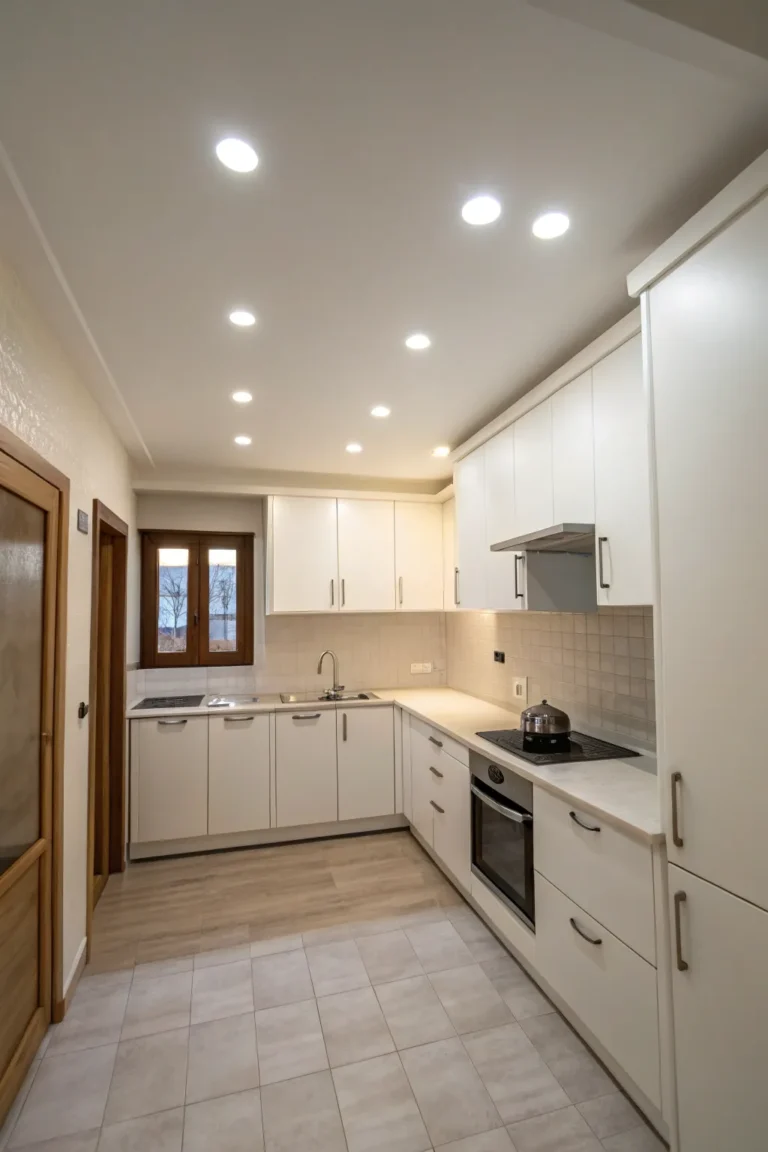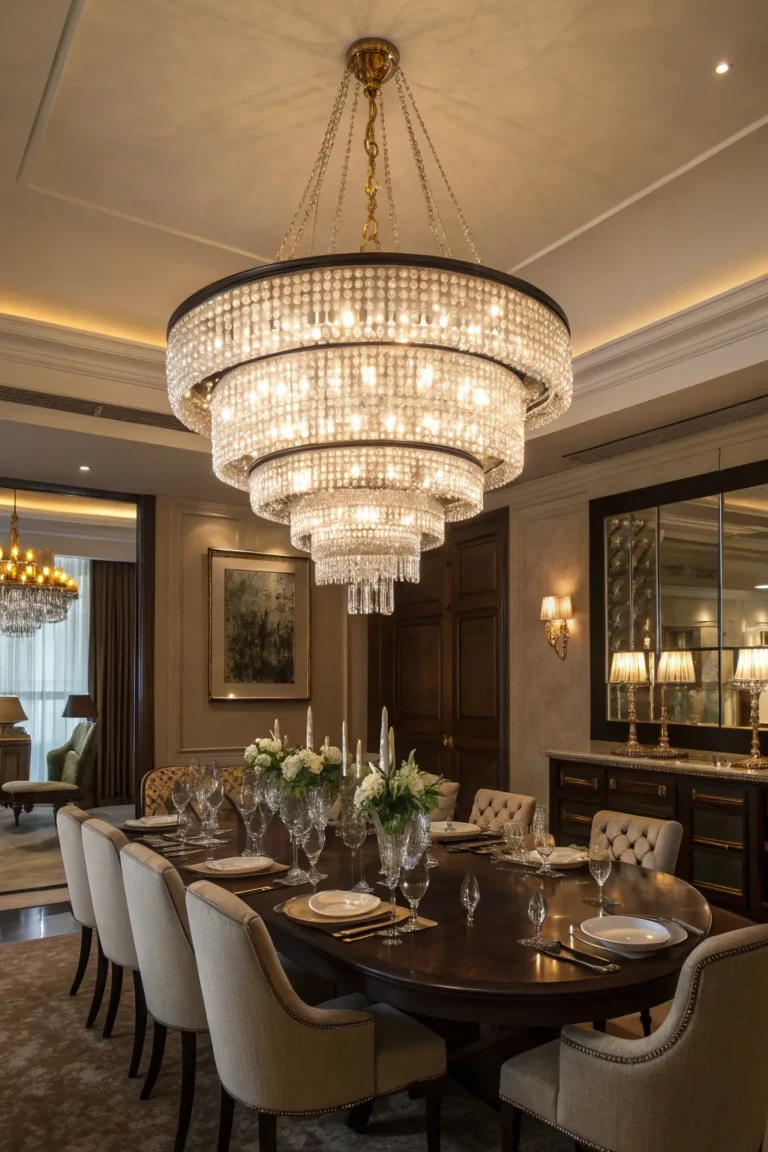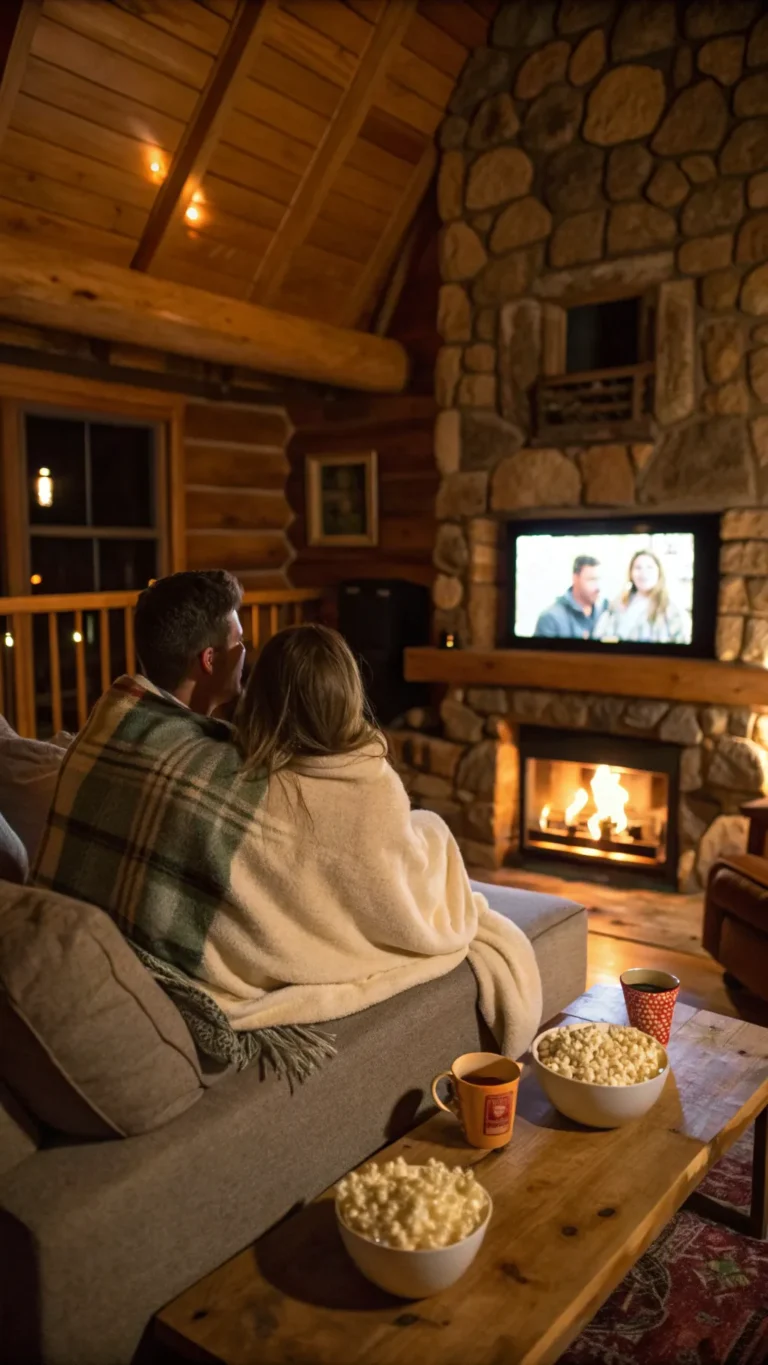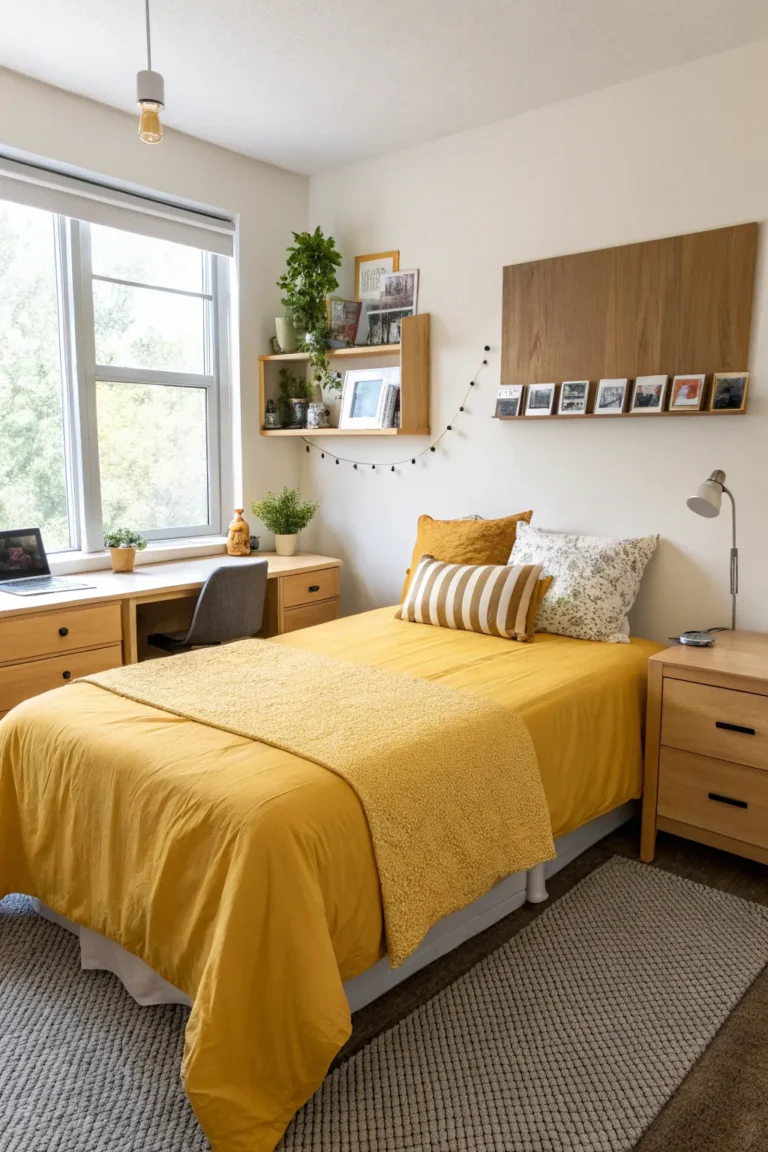10 Coastal Dining Room Ideas for a Breezy, Beachy Feel
You know that feeling when you walk into a room and instantly feel like you’re on vacation? That’s the magic I’m chasing with coastal dining rooms. There’s something about bringing the beach indoors that makes every meal feel like a mini getaway, and honestly, who doesn’t want that?
I’ve spent way too much time scrolling through coastal designs (guilty pleasure, don’t judge), and I’ve noticed what actually works versus what just looks like a beach store exploded in your dining room. Let me walk you through ten ideas that’ll transform your space without making it look like you robbed a souvenir shop.
In this article, we'll cover
- 1. Start With a Crisp White Base
- 2. Embrace Natural Wood Tones
- 3. Layer in Ocean-Inspired Blues
- 4. Install Sheer, Flowing Curtains
- 5. Bring in Woven Textures
- 6. Choose the Right Lighting Fixtures
- 7. Incorporate Casual, Comfortable Seating
- 8. Add Organic Centerpieces and Greenery
- 9. Create Gallery Walls With Coastal Art
- 10. Keep It Clutter-Free and Breezy
- Pulling It All Together
1. Start With a Crisp White Base
White is your best friend here. I’m talking walls, ceiling, maybe even your chairs. This isn’t me being boring—there’s actual method to this madness. White reflects natural light like nobody’s business, making your dining room feel bigger and airier than it actually is.
You can go with a pure white or add warmth with cream or ivory tones. I personally lean toward whites with subtle blue undertones because they play beautifully with natural light throughout the day. The best part? White gives you a blank canvas to layer in all those beachy textures and colors without things getting chaotic.
Think of it this way: beaches have sand (white-ish), sea foam (white-ish), and clouds (definitely white-ish). You’re just mimicking nature’s color scheme.
2. Embrace Natural Wood Tones
Nothing says coastal like weathered, natural wood. I’m obsessed with driftwood-style furniture because it brings that perfectly imperfect beach vibe indoors. Your dining table should ideally be wood—preferably something with visible grain and character.
Here’s what works:
- Reclaimed wood tables with a light wash or natural finish
- Whitewashed or pickled wood chairs that look sun-bleached
- Bamboo or rattan accents for that tropical coastal twist
Skip the dark mahogany unless you’re going for a yacht club vibe (which is cool, but different). You want wood that looks like it’s been kissed by salt air and sunshine. The more texture and grain variation, the better. IMO, perfection is overrated when it comes to coastal style.
3. Layer in Ocean-Inspired Blues
Can you even call it coastal without blue? I use blue strategically—not everywhere, just where it counts. Think of the ocean’s color palette: everything from pale aqua to deep navy exists in those waters.
My go-to blue strategy: Use softer blues on larger items like chair cushions or a statement rug, then punch things up with deeper navy in smaller doses through artwork or decorative accessories. This creates depth without overwhelming your space.
Coastal blue isn’t just one shade. You’ve got turquoise, aquamarine, seafoam, cerulean, navy—the list goes on. Mix a few complementary shades for a more authentic, ocean-layered look. And hey, if you’re feeling adventurous, coral or sandy beige accents play beautifully with blue.
4. Install Sheer, Flowing Curtains
Heavy drapes are coastal design’s enemy. Seriously, those thick velvet curtains blocking every ray of sunshine? Not the vibe. You want light, breezy curtains that billow when the window’s open—think linen or cotton in white or soft neutral tones.
The goal is filtering light, not blocking it. Sheer curtains create this dreamy, soft-focus effect that makes your dining room feel like it’s perpetually bathed in golden hour light. Plus, they move with air currents, adding subtle movement to your space.
I usually hang curtains higher and wider than the actual window frame. This trick makes your windows look bigger and your ceilings feel taller. More light, more space perception—it’s basically optical illusion magic.
5. Bring in Woven Textures
Texture is where coastal design gets really interesting. Woven materials add that tactile, organic quality that makes a space feel collected and lived-in rather than staged. I’m talking seagrass, jute, rattan, wicker—all those materials that remind you of beach baskets and seaside markets.
Consider these additions:
- Seagrass or jute rug under your dining table for natural texture
- Rattan dining chairs for serious coastal credibility
- Woven pendant light fixtures to add interest overhead
- Wicker baskets for storage that’s both functional and decorative
Ever noticed how beachy spaces never feel cold? That’s the texture doing heavy lifting. These natural fibers warm up all that white and blue, creating balance. Plus, they’re durable as heck—perfect for spaces where people actually eat and live.
6. Choose the Right Lighting Fixtures
Lighting can make or break your coastal vibe. You need fixtures that feel relaxed and organic, not uptight and formal. Forget crystal chandeliers unless you’re decorating a coastal mansion (and if you are, can we be friends?).
My favorite coastal lighting options include capiz shell chandeliers, rope-wrapped pendants, woven basket lights, or fixtures with weathered metal finishes. These pieces become conversation starters while providing functional illumination.
Natural light is your star player here, though. Maximize it however possible. If you’re working with limited windows, strategically placed mirrors can bounce light around your space. I’ve seen mirrors work absolute wonders in darker dining rooms—it’s like adding windows without the construction nightmare.
7. Incorporate Casual, Comfortable Seating
Coastal dining isn’t about stiff, formal meals where everyone’s afraid to spill. Your seating should invite people to sit, stay, and actually relax. I prefer slipcovered chairs in washable fabrics or simple wooden chairs with cushioned seats over anything too precious.
Mixing seating styles works beautifully in coastal spaces. Try pairing a weathered wood bench on one side of your table with upholstered chairs on the other. This creates visual interest while keeping things casual. Throw in some striped or textured cushions for extra comfort and coastal charm.
FYI: If you have kids or you’re just a messy eater (no shame, I’m right there with you), performance fabrics are lifesavers. They look like regular linen or cotton but repel stains like magic. Technology is beautiful sometimes 🙂
8. Add Organic Centerpieces and Greenery
Ditch the fake coral and seashell explosions. Real coastal homes near the beach don’t look like theme restaurants, and neither should yours. Instead, bring in living plants and organic elements that feel authentic.
I love these centerpiece ideas:
- Large glass bowl filled with sand and a few choice shells you actually collected
- Potted succulents or air plants in simple ceramic containers
- Fresh eucalyptus or palm fronds in a clear glass vase
- Driftwood pieces paired with simple white candles
Keep your table decor low-profile so people can actually see each other during dinner. Nothing ruins conversation faster than talking around a massive floral arrangement. Plants add life and freshness to your space while purifying the air—bonus points for functionality.
9. Create Gallery Walls With Coastal Art
Artwork tells your coastal story. I’m particular about this because bad coastal art is everywhere—you know the kind with “Live, Laugh, Love” in script font over a sunset photo. We’re aiming higher than that.
Look for abstract seascapes, vintage nautical charts, black and white beach photography, or original watercolors featuring coastal landscapes. Mix frame styles and sizes for an eclectic, collected-over-time feel. This approach feels more authentic than matching frame sets.
What works best? Pieces that capture the mood of the coast rather than literal representations. You’re going for feeling, not theme park. A beautiful abstract in blues and sandy tones can evoke the ocean without hitting you over the head with anchors and lighthouses.
10. Keep It Clutter-Free and Breezy
Here’s the truth: coastal style breathes. Literally. The whole aesthetic falls apart when you cram too much stuff into your space. Beaches feel expansive and open—your dining room should too.
Edit ruthlessly. Every decorative item should earn its place. That collection of shells from every beach vacation? Pick your favorite five and display those beautifully rather than scattering fifty random shells everywhere. Quality over quantity creates sophistication.
I maintain this vibe by regularly rotating accessories and keeping surfaces mostly clear. Your dining table should have space to actually dine, your sideboard shouldn’t overflow with tchotchkes, and your walls need breathing room between art pieces. Negative space is a design element—embrace it.
Pulling It All Together
Creating a coastal dining room isn’t about following rules religiously—it’s about capturing that relaxed, vacation feeling we’re all craving. You’re building a space that makes people want to linger over meals, where conversation flows as easily as ocean waves.
Start with the ideas that resonate most with your style and budget. Maybe that’s just painting your walls white and adding sheer curtains, or perhaps you’re ready to commit to new furniture and a full redesign. Either way, layer your changes gradually so your space develops character rather than looking catalog-perfect overnight.
The best coastal dining rooms feel effortless, like they evolved naturally over time. They combine comfort with style, casual vibes with thoughtful design. And honestly? They make every Tuesday night dinner feel just a little more special—which is exactly the point.
Discover more from Leafy Haven Home | Stylish Garden Ideas & Cozy Decor Tips
Subscribe to get the latest posts sent to your email.

